Is Facebook Prophet Suited For Doing Good Predictions In A Real-World Project?

Forecasting is at the heart of many business decisions from anticipating product demand to predicting website traffic or planning staffing needs. Inaccurate forecasts can lead to lost revenue, wasted resources, or missed opportunities. Among the many forecasting tools available today, Facebook Prophet stands out for its accessibility and straightforward design. But is it truly suitable for making reliable predictions in real-world projects? Let’s explore in depth. Facebook Prophet Facebook Prophet is an open-source forecasting tool developed by Meta’s data science team. It’s designed for time series forecasting, which involves predicting future values based on past data trends. Prophet is built with business users in mind, aiming to make accurate forecasting possible without needing a deep background in statistics or machine learning. Key Features: Why Businesses Consider Facebook Prophet Many organizations choose Prophet because it strikes a balance between simplicity and capability. It’s particularly appealing for: Prophet works with both Python and R, making it accessible to teams with different tech stacks. Strengths of Facebook Prophet in Real-World Use While no tool is perfect, Prophet offers several advantages for real-world forecasting projects. 1. Easy to Set Up 2. Handles Missing Data and Outliers 3. Built-in Seasonality and Holiday Effects 4. Interpretable Results Example: A retail company can use Prophet to forecast holiday season sales by combining historical sales data with specific shopping events like Black Friday and Boxing Day. Limitations You Should Be Aware Of For all its strengths, Facebook Prophet does have some limitations, especially in complex forecasting scenarios. 1. Over-Simplification 2. Assumptions in the Model 3. Performance on Volatile Data 4. Limited Complexity Handling How It Compares to Other Forecasting Methods Prophet isn’t the only forecasting tool out there. In fact, depending on your project, another method might be a better fit. ARIMA (AutoRegressive Integrated Moving Average) LSTM (Long Short-Term Memory Networks) Hybrid Approaches When Facebook Prophet Makes Sense Prophet shines in certain scenarios and underperforms in others. Knowing when to use it is key. Best Fit Use Cases: Poor Fit Use Cases: Tips for Getting Better Results with Facebook Prophet If you decide Prophet is the right tool for your project, here are ways to improve its accuracy: 1. Invest in Data Quality 2. Tune Model Parameters 3. Add Custom Regressors 4. Validate with Backtesting Final Thoughts Facebook Prophet can absolutely deliver good predictions in the right context but success depends on matching the tool to the problem. For businesses that rely on seasonal trends and structured historical data, Prophet is a strong option. For more complex forecasting needs, blending it with other approaches ensures reliability and depth. At Miniml, we help businesses choose the forecasting strategy that fits their goals, whether that’s Prophet, ARIMA, LSTM, or a hybrid model. The key isn’t just the tool itself, but how it’s applied to your unique data and business challenges.
A Guide To The Different Types Of Generative AI Models
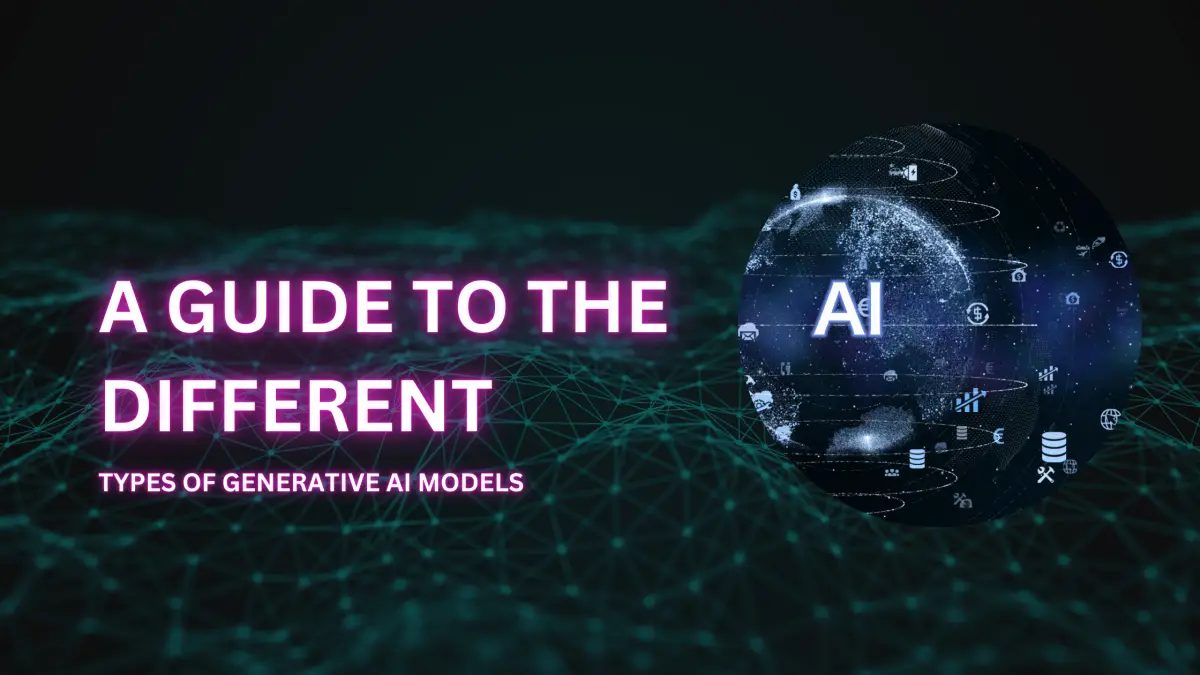
Generative AI Models: Generative AI has become one of the most talked-about areas in technology, with its ability to create original content that feels like it came from a human mind. From producing realistic images to drafting complex reports, these models are finding their way into industries ranging from healthcare to finance. Yet, “generative AI” is not a single technology. It’s an umbrella term that covers several different model types, each with unique strengths and use cases. For businesses, understanding these differences is crucial. Choosing the right model can make the difference between a solution that delivers value and one that falls short. At Miniml, we’ve seen first-hand how tailoring the right model to the right problem can produce remarkable results. This guide breaks down the main types of generative AI models, their applications, and how to select the best fit for your needs. What is Generative AI? Generative AI refers to systems that can create new data text, images, music, code, and more based on the patterns they’ve learned from existing datasets. Unlike traditional AI models, which often focus on classification or prediction, generative models are designed to produce outputs that did not exist before. This creative aspect is why they’re being adopted in so many sectors, from product design to customer service. Why Knowing the Model Type Matters for Businesses Selecting a generative AI model isn’t just a technical decision it’s a strategic one. The choice impacts: When advising clients, Miniml focuses on aligning the model type with the project’s objectives, available resources, and industry-specific demands. The Main Types of Generative AI Models 1. Large Language Models (LLMs) LLMs are trained on vast amounts of text to understand and generate human-like language. Examples: GPT, Claude, LLaMACommon Uses: Advantages: Limitations: 2. Diffusion Models Diffusion models create images by starting with random noise and refining it step by step until a clear image emerges. Examples: Stable Diffusion, DALL·ECommon Uses: Advantages: Limitations: 3. Generative Adversarial Networks (GANs) GANs consist of two neural networks a generator and a discriminator that compete to produce increasingly realistic outputs. Examples: StyleGAN, BigGANCommon Uses: Advantages: Limitations: 4. Variational Autoencoders (VAEs) VAEs compress input data into a simplified representation (encoding) and then reconstruct it (decoding). Examples: Beta-VAE, Conditional VAECommon Uses: Advantages: Limitations: 5. Multimodal Generative Models These models process and generate different types of data simultaneously, such as text and images, or text and audio. Examples: CLIP, GPT-4 with vision capabilities, GeminiCommon Uses: Advantages: Limitations: How to Choose the Right Generative AI Model for Your Business When selecting a model, consider the following: 1. Data Type – Text, images, audio, or a combination?2. Goal – Do you need creative generation, predictive text, or realistic visuals?3. Scale – Will it be used for small experiments or large-scale deployments?4. Resources – Do you have the infrastructure to support large models?5. Ethics & Compliance – Will the outputs meet your industry’s regulatory standards? The Role of Customization Off-the-shelf models can be powerful, but they often need refining to perform well in specific contexts. At Miniml, we adapt models by: Real-World Industry Examples Healthcare – GANs and VAEs for medical imaging, helping doctors detect patterns in scans.Finance – LLMs for automating compliance reports and detecting fraud patterns.Retail – Diffusion models for generating product visuals that match seasonal campaigns.Education – Multimodal models creating interactive learning modules for students. Common Challenges with Generative AI Models While the opportunities are significant, businesses should be aware of potential challenges: The Future of Generative AI Models Looking ahead, we can expect: Conclusion & Next Steps Generative AI offers a wide spectrum of capabilities, and no single model fits every scenario. Understanding the differences from LLMs to diffusion models, GANs, VAEs, and multimodal systems allows businesses to make informed choices. If you’re considering implementing generative AI in your operations, the best starting point is an in-depth assessment of your goals, data, and resources. Miniml works with organizations to design and deliver solutions that align with their needs, ensuring the right technology is applied for maximum impact.
Multi-Touch Attribution: From Traditional Models to Deep Learning Approaches
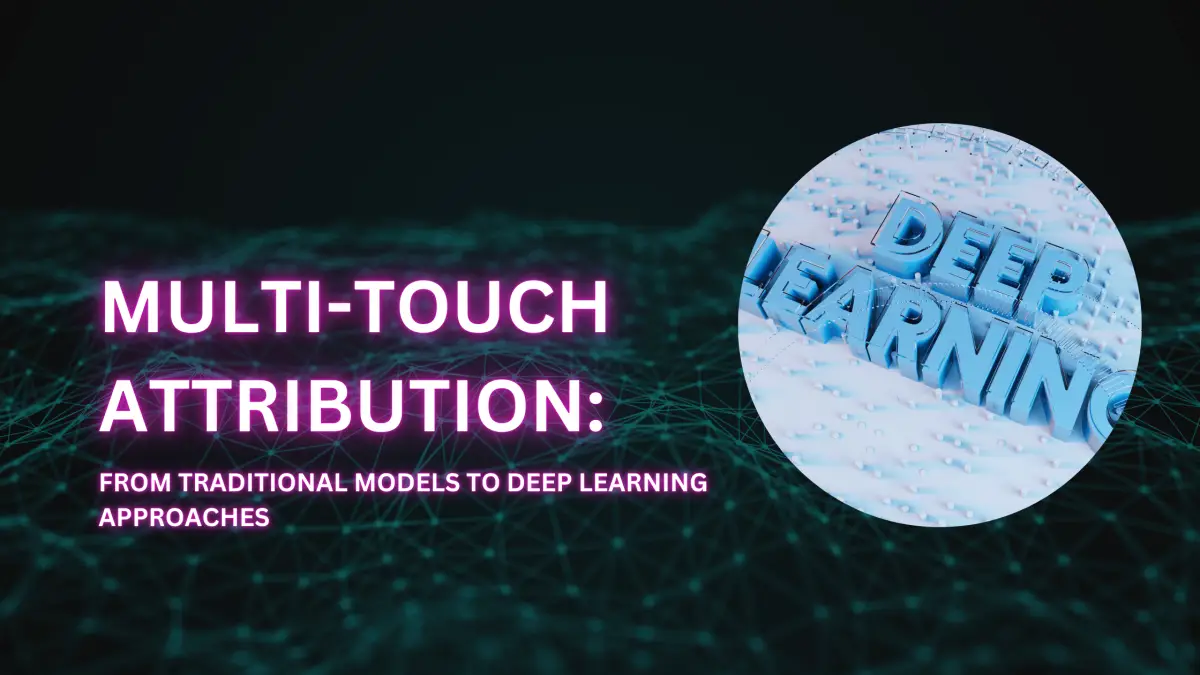
Multi Touch Attribution: In the ever-expanding digital marketing world, understanding the real value of each customer touchpoint is no longer optional it’s essential for making informed decisions about budget and strategy. Multi-touch attribution (MTA) offers a structured way to evaluate how different interactions influence a buyer’s journey, from the first ad impression to the final purchase. While older, rules-based models have served as a foundation, they often oversimplify complex customer behavior. Recent advances in data science have made it possible to take a more refined, data-driven approach. By combining statistical techniques with advanced modeling, businesses can gain a far clearer picture of what drives conversions. This guide explores how attribution has evolved from traditional models to advanced deep learning techniques, along with practical insights for businesses considering this transition. What is Multi-Touch Attribution? Multi Touch Attribution is a method of assigning credit to the different marketing channels and interactions a customer encounters before making a purchase. Unlike single-touch models where all credit goes to the first or last interaction MTA spreads recognition across multiple touchpoints, reflecting the real-world complexity of decision-making. The main aim is to help marketers: For example, a customer might first see a display ad, click an email link, read a blog post, and then search for your brand before buying. MTA tries to map this sequence accurately and fairly. Traditional Multi Touch Attribution Models Traditional attribution models use pre-set rules to assign value. They are easy to understand but can oversimplify buyer behavior. Common types include: 1. Linear Attribution 2. Time-Decay Attribution 3. Position-Based Attribution 4. U-Shaped and W-Shaped Models The main challenge: These models rely on assumptions about how customers behave rather than actual behavioral patterns. In a world of fragmented journeys across devices and platforms, this can limit accuracy. Why the Shift Toward Data-Driven Attribution? As marketing channels multiply, rules-based models struggle to keep pace with the complexity of real buyer behavior. Customers now interact with brands through search engines, social media, email, apps, and offline events, often in unpredictable sequences. Key reasons for change: Data-driven models adapt to changing customer behaviors and uncover patterns that static models might miss. This evolution sets the stage for deep learning approaches. Deep Learning Approaches in Multi Touch Attribution Deep learning offers a more flexible and powerful way to model customer journeys. Instead of relying on pre-set credit rules, these methods learn from historical data to predict the probability of conversion based on the sequence of interactions. Key Techniques in Deep Learning Attribution Benefits of Deep Learning for Attribution Deep learning attribution can bring: These benefits mean marketers can make decisions based on observed patterns rather than assumptions. Challenges and Considerations While deep learning brings powerful capabilities, businesses need to be mindful of certain challenges: Transitioning from Traditional to Deep Learning Attribution Shifting from rules-based models to deep learning takes planning and clear steps. Suggested roadmap: Conclusion & Future Outlook: Multi Touch Attribution The path from traditional multi touch attribution models to deep learning-based approaches reflects a broader shift in marketing away from one-size-fits-all assumptions toward evidence-driven decision-making. While traditional models are still valuable for quick, easy-to-understand insights, deep learning offers a way to capture the full complexity of customer journeys. As data volume grows and customer pathways become more intricate, businesses that adapt their attribution strategies will be better positioned to make confident, profitable decisions. For organizations ready to explore what deep learning can offer in attribution, working with an experienced partner can make the difference between a promising concept and a measurable business outcome. Miniml helps clients design and implement attribution systems tailored to their industry, data, and goals turning complex journeys into clear, actionable insights.
How To Build an AI App

AI App: Artificial intelligence has moved from tech conference buzzwords into everyday business reality. From predictive healthcare tools to smart financial analysis systems, AI-powered applications are being adopted across industries to solve real problems. For many companies, the idea of creating their own AI-driven app feels exciting but also daunting. There’s a lot to think about: what problem should it solve, how will the data be managed, which technology stack to choose, and how to make sure it’s secure and scalable. At Miniml, an Edinburgh-based AI consultancy, we’ve helped businesses in healthcare, finance, retail, and education move from a concept on paper to fully functioning, production-ready AI applications. This guide walks you through the process in a clear, practical way without the jargon overload. What an AI App Is An AI app is any application that uses machine learning, natural language processing, or other artificial intelligence techniques to perform tasks that would normally require human intelligence. Unlike traditional apps that follow strict, pre-programmed rules, AI apps learn from data and improve over time. Examples include: At their core, these applications combine data, algorithms, and user interfaces to provide intelligent, adaptable solutions. Step-by-Step Process to Build an AI App 1. Define the Problem and Goals Every successful AI project starts with a clear understanding of the business challenge. Without this, you risk building something impressive that doesn’t actually meet your needs. 2. Choose the Right AI Model and Approach AI isn’t a one-size-fits-all technology. The model you choose will depend on your goal. 3. Gather and Prepare Quality Data Data is the fuel of any AI app. Poor data leads to poor results. 4. Select the Technology Stack The tools you use will impact both development speed and app performance. 5. Develop, Test, and Iterate Building an AI app is rarely a straight line from start to finish. 6. Deploy and Integrate Once your app is ready, it’s time to make it available to users. Common Challenges in Building AI Apps (and How to Handle Them) Even with a clear plan, you’ll face challenges along the way: At Miniml, we approach these issues early in the project to prevent costly mistakes later. Best Practices for Building Successful AI Apps Real-World Use Cases Some practical examples of AI apps across industries include: These use cases show how AI apps can solve industry-specific problems in measurable ways. Why Partner with a Specialist Like Miniml While it’s possible to attempt AI app development in-house, partnering with an experienced consultancy reduces the risks and accelerates delivery. At Miniml, we: If you have a vision for an AI-powered app, we can help turn it into a working product. Conclusion Building an AI app involves more than coding it’s about identifying the right problem, selecting the right technology, and ensuring the solution delivers long-term value. By following a structured process, avoiding common pitfalls, and working with experienced partners, businesses can create applications that genuinely improve operations and decision-making. If your business is ready to take the first step, contact Miniml today to discuss your project and start planning a tailored AI app that works for you.
What Is Web3 Gaming?
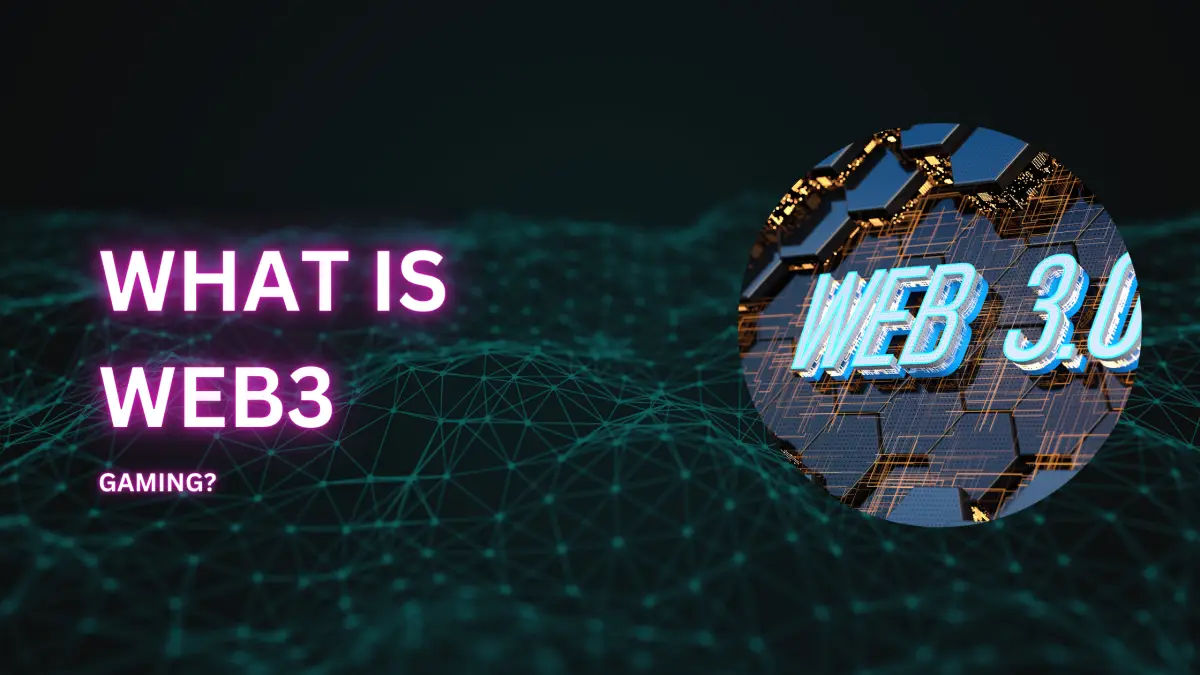
The gaming industry has come a long way since the days of pixelated graphics and offline cartridges. From local arcade machines to online multiplayer platforms, each stage in gaming’s history has introduced new ways to play, connect, and create. Now, we stand on the edge of another major shift Web3 gaming. Web3 gaming is not just about better visuals or faster servers. It’s about rethinking who owns the digital world, how players interact with it, and what value gaming can create beyond entertainment. At its core, it blends blockchain technology with gaming to offer digital ownership, decentralized control, and new economic opportunities for players and developers. From Web1 to Web3 – How Gaming Got Here The journey to Web3 gaming can be better understood by looking back at how gaming evolved alongside the internet. Web1 – The Static Era In the early days of the internet, games were simple and mostly single-player. Websites were static, offering limited interaction. Multiplayer options existed but were often text-based or extremely basic. Think of browser-based games like early chess servers or minimal puzzle sites. Web2 – The Social & Mobile Era The Web2 era brought interaction and connectivity. Social media, online multiplayer platforms, and mobile gaming took center stage. Players could connect with friends worldwide, and developers could introduce microtransactions, downloadable content, and cloud-based saves. This is also when esports and streaming became cultural phenomena. Web3 – The Decentralized Future Web3 introduces blockchain technology, smart contracts, and cryptocurrencies into the gaming ecosystem. Unlike Web2, where game assets are controlled by developers, Web3 allows players to own their in-game items as digital assets, which can be traded, sold, or even used in multiple games. Key Features of Web3 Gaming Web3 gaming differs from traditional gaming in several ways that reshape the player experience: 1. True Digital Ownership In most modern games, items you purchase or earn are stored on company servers. If the servers shut down, so do your assets. Web3 changes this by using blockchain to store ownership data, making your digital assets such as skins, characters, and weapons truly yours. 2. Play-to-Earn (P2E) Economy Players can earn cryptocurrency or valuable in-game tokens that have real-world value. Instead of gaming being purely a leisure activity, it becomes a way to generate income. 3. Interoperability Assets in Web3 games can often be used across multiple platforms or titles. For example, a unique sword earned in one game might also appear in a different fantasy game if both share the same blockchain infrastructure. 4. Community Governance Through Decentralized Autonomous Organizations (DAOs), players can vote on game updates, changes to token economics, and even storyline developments. How Web3 Gaming Works At its heart, Web3 gaming relies on blockchain technology to secure transactions and record asset ownership. Here’s how it functions: Popular Examples of Web3 Games Several titles have already made waves in the Web3 gaming space: Benefits of Web3 Gaming The shift to Web3 offers distinct advantages for different stakeholders. For Players For Developers For Investors Challenges and Risks in Web3 Gaming While the potential is huge, Web3 gaming is not without its hurdles. The Future of Web3 Gaming Looking ahead, Web3 gaming is expected to merge with other emerging technologies: How Data and Automation Could Shape Web3 Gaming Although Web3 focuses heavily on decentralization, it will also rely on intelligent systems to run smoothly. This is where advanced analytics and automation come into play: These developments will be key to ensuring that Web3 gaming grows into a sustainable and enjoyable industry for all involved. Final Thoughts Web3 gaming represents a significant shift in how games are played, owned, and valued. By combining blockchain, community governance, and new economic models, it offers a more player-driven experience than ever before. However, it is still in its early stages, with challenges to overcome before it becomes a mainstream part of the gaming industry. For players, it’s a chance to truly own what they earn in-game. For developers, it opens doors to deeper connections with their communities. For investors, it’s an emerging space with high potential.
What Is Custom Software Development?
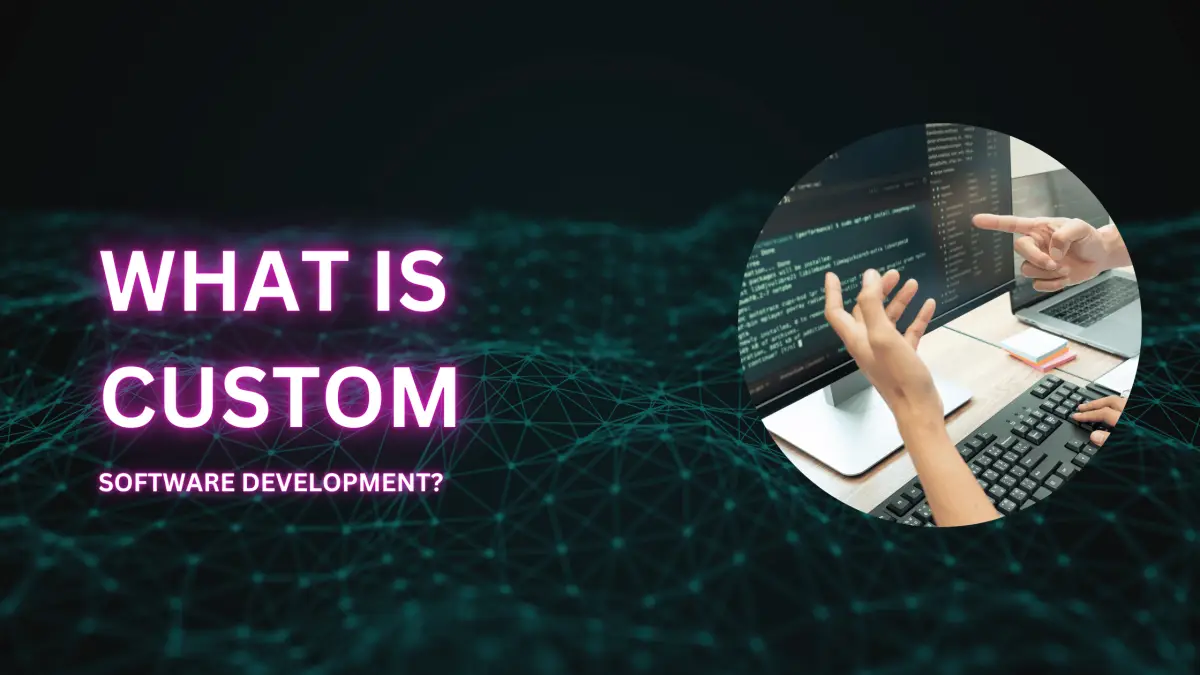
In today’s competitive business landscape, technology plays a central role in how companies operate, connect with customers, and grow. While there are plenty of ready-made software products available, they often come with limitations. They may include unnecessary features, lack integration with existing systems, or fail to address unique business needs. This is where custom software development comes in creating tailor-made digital solutions designed to fit a specific organization’s requirements. At Miniml, we specialize in designing such solutions, especially when they involve advanced machine learning, data-driven insights, and scalable business applications. Custom Software Development Custom software development refers to the process of designing, building, deploying, and maintaining software specifically for a single business or a set of users. Unlike off-the-shelf products, which are built for mass use, custom solutions are unique to the organization that commissions them. Key differences between custom and off-the-shelf software: Industries that often invest in custom software include: The Custom Software Development Process Creating custom software isn’t just about writing code. It’s a structured process involving collaboration between developers, business analysts, designers, and end-users. Here’s how it typically unfolds: 1. Requirement Analysis This stage involves deep discussions with stakeholders to understand the exact goals, challenges, and expectations. The focus is on identifying the must-have features, potential integrations, and any compliance requirements. 2. Design and Architecture Once requirements are clear, the software’s blueprint is prepared. This includes: 3. Development and Testing The coding phase begins with an iterative approach often using agile methods where features are built in phases and tested frequently to ensure quality. 4. Deployment and Support After rigorous testing, the software is deployed to the production environment. Post-launch, ongoing support ensures the system remains functional, secure, and updated. Quick process checklist: Benefits of Custom Software Development A well-designed custom solution offers benefits that generic software simply cannot match. 1. Perfect Fit for Business Needs Every feature is designed with your operations in mind, ensuring no wasted resources on tools you’ll never use. 2. Scalability As your business grows, the software can be expanded with new features or higher capacity without replacing the entire system. 3. Seamless Integration Custom software can connect effortlessly with your current systems, whether it’s a CRM, ERP, or industry-specific tool. 4. Higher Data Security You control where and how data is stored, minimizing the risk of vulnerabilities common in mass-market software. 5. Competitive Advantage When your systems work exactly the way you need them to, you can operate more efficiently and offer better customer experiences. Challenges in Custom Software Development While the benefits are compelling, there are challenges businesses should consider before starting: The Role of AI in Custom Software Development Artificial Intelligence (AI) is no longer just a futuristic concept it’s a powerful tool in creating smarter, more responsive software. How AI fits into custom development: Example applications by industry: At Miniml, we incorporate AI from the ground up ensuring that the software isn’t just functional but also intelligent. Best Practices for a Successful Custom Software Project If you’re considering investing in a custom solution, following these practices can help ensure success: How Miniml Delivers Custom Solutions Miniml isn’t just another development agency. Based in Edinburgh, we focus on creating tailored AI-driven systems that combine: Sample project outcomes: Future Trends in Custom Software Development The landscape is evolving rapidly. Some trends shaping the future include: Businesses that prepare for these trends now will be better equipped for long-term success. Conclusion Custom software development offers a path for businesses to create tools perfectly suited to their operations. While it requires more investment and planning than buying ready-made products, the result is a system that supports your growth, integrates with your processes, and adapts as you evolve.For organizations ready to take that step, Miniml provides not just development expertise but also strategic insight ensuring every line of code serves your business goals.
From GraphRAG To Agentic Search: Boost AI Retrieval

GraphRAG to Agentic Search: The way businesses retrieve and interact with information is changing rapidly. For years, retrieval-augmented generation (RAG) has been the go-to method for improving large language model (LLM) responses with relevant external data. GraphRAG took this further, adding a structured, graph-based approach to connect and organize information in more meaningful ways. Now, a new approach agentic search is beginning to reshape how we think about data retrieval. Rather than just reacting to a query, agentic search actively plans, searches, and refines the process to deliver context-rich, accurate, and timely answers. For industries dealing with fast-moving data, such as healthcare, finance, retail, and education, this shift offers a new level of adaptability and precision. Understanding GraphRAG What is GraphRAG? GraphRAG is an advanced method that combines graph databases with language models to retrieve information. Instead of relying solely on keyword matching or vector similarity, GraphRAG maps relationships between data points, creating a network (graph) of entities and their connections. For example, in a healthcare setting, GraphRAG could link symptoms, treatments, and research studies, allowing a model to answer more complex, multi-step queries. This makes it more effective for tasks that require tracing connections between multiple concepts. Limitations of GraphRAG in Modern Use While powerful, GraphRAG comes with certain limitations: The Rise of Agentic Search What is Agentic Search? Agentic search moves beyond static query-and-response systems. It treats the retrieval process as an active, goal-oriented task, where the system behaves more like a skilled researcher than a passive search tool. An agentic search system doesn’t just pull data from a single source it can: In simpler terms, GraphRAG is like a librarian who finds exactly what you request, while agentic search is like a research assistant who anticipates related information you didn’t even think to ask for. Why It’s Gaining Momentum The growing popularity of agentic search comes down to its adaptability: From GraphRAG to Agentic Search: The Transition Why Businesses Are Moving Beyond GraphRAG GraphRAG’s strength lies in structured, interconnected knowledge. But as industries face faster data cycles, there’s a growing need for retrieval systems that can act in real-time, explore unfamiliar areas, and adapt their approach mid-search. Agentic search fits this requirement by being less dependent on predefined structures and more capable of operating autonomously across a variety of information landscapes. Key Differences in Capability How Agentic Search Improves Retrieval Agentic search improves on GraphRAG by creating a more comprehensive retrieval process that mirrors how humans research complex problems. Top 5 Ways Agentic Search Improves Retrieval: By applying these capabilities, agentic search systems can support decision-making in areas where accuracy, timeliness, and depth are critical. Implementation Considerations for Businesses Steps for Moving from GraphRAG to Agentic Search Transitioning from GraphRAG to agentic search requires a careful, phased approach: Industry-Specific Use Cases The Future of AI Retrieval Looking ahead, agentic search is likely to evolve into even more sophisticated systems. Potential future developments include: As these technologies mature, businesses that adopt them early will be better positioned to keep pace with shifting market demands. Conclusion & Call-to-Action The shift from GraphRAG to agentic search represents more than just a technical upgrade it’s a change in how organizations approach information retrieval. By adopting agentic search, businesses can work with systems that anticipate needs, draw from diverse data sources, and provide results that are both timely and contextually rich. At Miniml, we help organizations design and implement retrieval systems tailored to their industry needs. Whether you’re in healthcare, finance, retail, or education, our expertise ensures that your data is working for you, not the other way around.
10 Reasons Businesses Choose Secure AI
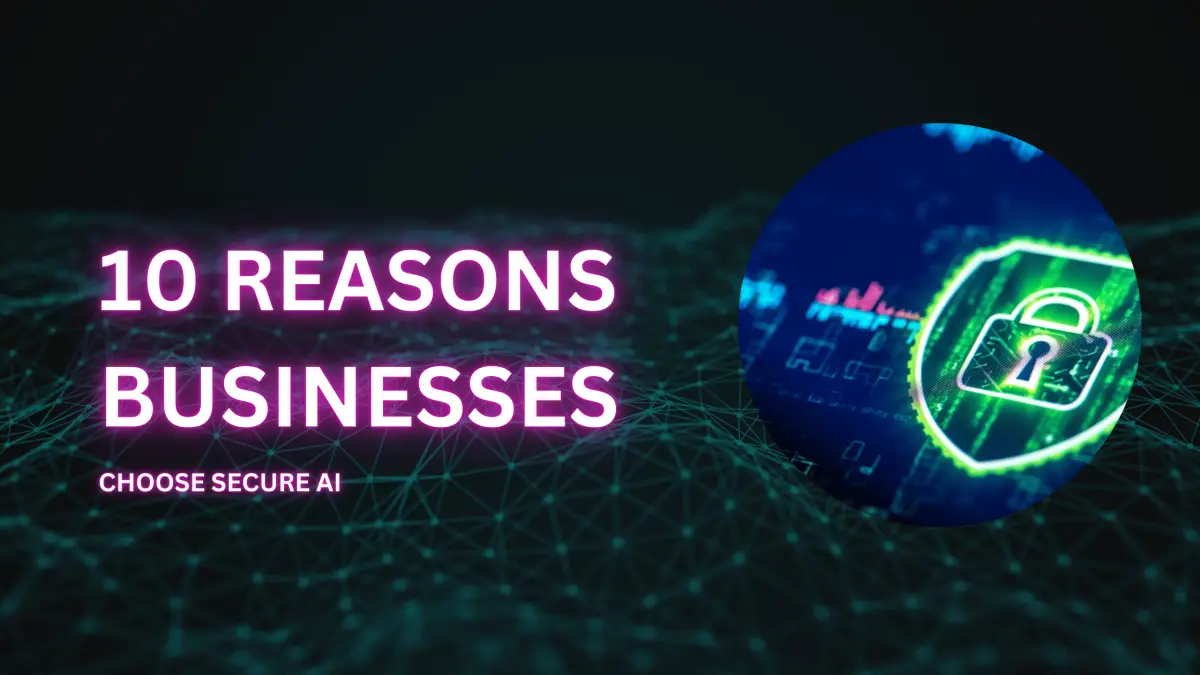
In today’s connected world, technology is advancing at an incredible pace, and artificial intelligence is becoming a trusted partner for decision-making, automation, and customer engagement. But with all this opportunity comes responsibility. Businesses can’t afford to deploy AI systems that put sensitive data at risk or leave gaps in compliance. That’s where secure AI comes in an approach that protects data, maintains system integrity, and ensures the trust of both customers and stakeholders. For companies working in sectors like healthcare, finance, retail, and education, the stakes are even higher. Miniml, based in Edinburgh, specialises in building custom AI solutions that don’t just perform well they’re built with security at their core. The Growing Need for Security in AI AI systems rely on massive amounts of data to function effectively. That data often includes confidential customer information, trade secrets, or regulated content. Without the right safeguards, the consequences can be serious: In short, security isn’t optional it’s a business necessity. Let’s explore the ten most important reasons why forward-thinking businesses choose secure AI solutions. 1. Protecting Sensitive Data One of the most pressing reasons to choose secure AI is the protection of sensitive information. From patient health records to confidential financial data, organisations need to ensure that private details stay private. Security-first AI systems are designed with encryption protocols, secure data storage, and strict access controls. This means only authorised users can view or manipulate sensitive information, reducing the risk of leaks or unauthorised access. 2. Meeting Compliance and Regulatory Standards Industries like healthcare, banking, and education operate under strict regulations such as: Failing to comply can lead to legal action, financial penalties, and loss of public trust. Secure AI systems are built with these regulations in mind, ensuring that every stage of data processing from collection to analysis meets industry requirements. 3. Preventing Data Leaks and Unauthorized Access Data leaks can be caused by hackers, insider threats, or simple human error. Secure AI mitigates these risks by implementing: These safeguards mean even if one layer is breached, other barriers are in place to protect the data. 4. Ensuring Model Integrity AI models can be manipulated if left unprotected attackers may try to feed them misleading data or alter their parameters. Secure AI prevents this through: Maintaining model integrity is crucial for businesses that rely on AI for critical decisions, such as financial forecasts or medical diagnoses. 5. Building Customer Trust Customers are more likely to work with businesses they believe will keep their information safe. Secure AI shows a company is serious about protecting privacy and maintaining transparency in how data is used. Over time, this builds loyalty and strengthens brand reputation. Trust is especially important in sectors like finance and healthcare, where a single breach can cause irreparable damage to relationships. 6. Avoiding Legal and Financial Penalties The cost of fixing a security breach goes far beyond technical repairs. Businesses may face: Secure AI systems act as a safeguard against these potential financial setbacks by reducing the likelihood of a breach in the first place. 7. Safeguarding Intellectual Property For companies developing their own algorithms, workflows, or unique datasets, intellectual property (IP) is a valuable asset. Secure AI includes protective measures such as encrypted model storage, controlled code access, and strict usage policies to keep proprietary information safe from theft or misuse. 8. Maintaining Business Continuity Cyberattacks, system failures, or data corruption can halt operations and lead to missed deadlines. Secure AI solutions are built with redundancy, backup systems, and recovery protocols to ensure business operations can continue even in the face of an incident. This reliability is essential for organisations that rely on AI systems to keep day-to-day functions running smoothly. 9. Ethical AI and Bias Mitigation Security isn’t only about locking down systems it’s also about ensuring fairness and transparency. Secure AI often includes monitoring and auditing tools that help identify and correct biased outcomes, ensuring decisions are made based on accurate, representative data. This is particularly important in recruitment, lending, and healthcare, where biased outputs could have serious consequences. 10. Future-Proofing Against Evolving Threats Cybersecurity threats change rapidly. Secure AI systems are designed to be adaptable, with ongoing updates and improvements that keep them ahead of new attack methods. By choosing a provider like Miniml, businesses benefit from continuous monitoring and proactive risk assessment, ensuring their systems stay secure not just today, but in the years to come. How Miniml Delivers Secure AI Miniml approaches secure AI as a complete lifecycle process: Whether it’s a language model for a legal firm, a predictive system for a retailer, or an automation solution for a healthcare provider, Miniml ensures that every project is developed with security woven into its foundation. Conclusion Secure AI isn’t a luxury it’s a necessity for businesses that want to protect data, maintain compliance, and build trust in a competitive marketplace. From safeguarding intellectual property to preventing costly breaches, the reasons for investing in security are clear. 10 reasons businesses choose secure AI: If your organisation is ready to explore a secure, custom AI solution tailored to your industry, Miniml is here to help. Our Edinburgh-based team works with clients across healthcare, finance, retail, and education to design AI strategies that deliver results without compromising security.
What Is RAG? Understanding The Latest Evolution Of GenAI
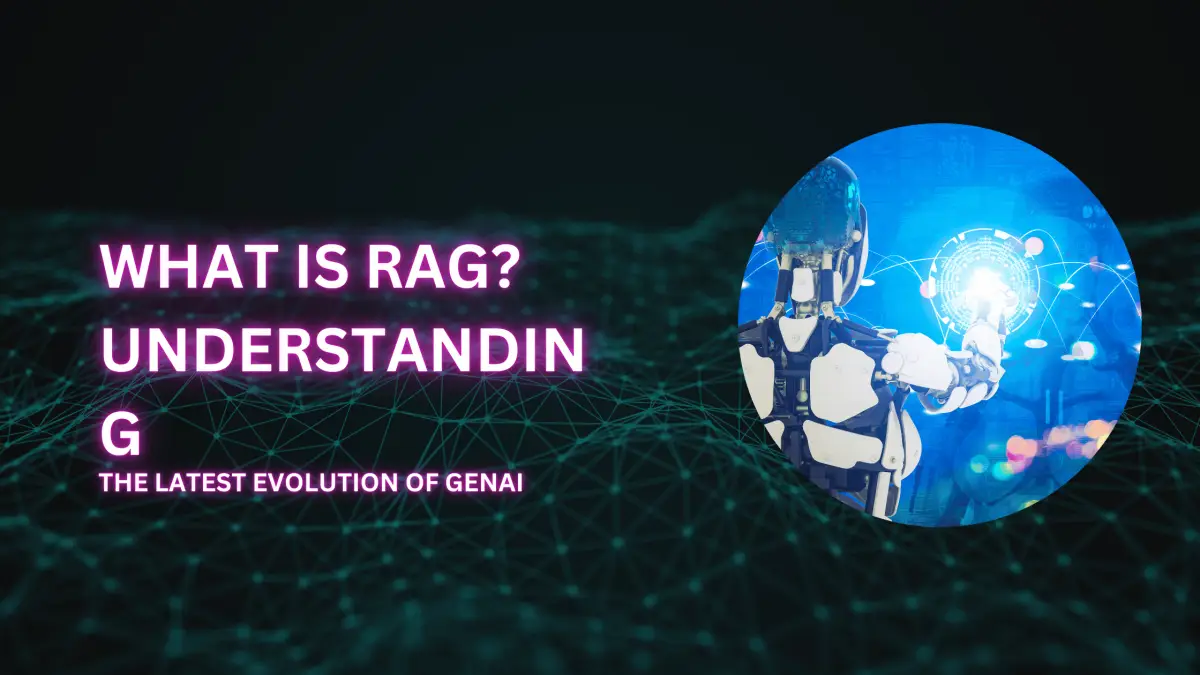
What is Rag: Generative AI is changing the way we interact with technology. From chatbots that answer questions in natural language to intelligent assistants that summarise complex documents, the capabilities of large language models (LLMs) are growing rapidly. However, one challenge still stands in their way accuracy. That’s where RAG, or Retrieval-Augmented Generation, comes in. This approach is shaping the next phase of AI adoption by combining the creative language skills of LLMs with the factual grounding of external data sources. In other words, it allows AI systems to speak confidently and stay correct. At Miniml, we’ve seen how RAG can make AI systems far more reliable for businesses in sectors like healthcare, finance, retail, and education. Let’s explore what RAG is, how it works, and why it’s becoming such an important step in the evolution of Generative AI. What is Retrieval-Augmented Generation? RAG stands for Retrieval-Augmented Generation. It’s a method where an AI system retrieves relevant information from a database, knowledge base, or other external source before producing its final answer. Instead of relying solely on what it learned during training, the AI fetches up-to-date, domain-specific content and uses it to shape a more accurate and context-aware response. Think of it like a student answering an exam question. Instead of guessing from memory alone, they check a reliable reference book, then give their answer confident that it’s based on the latest facts. How RAG Works: Step-by-Step The process behind RAG is straightforward once you break it down. Here’s how it flows in a typical application: By using this approach, RAG makes answers not only sound natural but also stay rooted in reality. RAG vs. Traditional LLMs Before RAG, LLMs worked in a closed world whatever they didn’t learn during training, they simply didn’t know. This meant they could produce plausible-sounding but factually incorrect information, often called “hallucinations.” With RAG: Without RAG: Feature Without RAG With RAG Data Freshness Static Real-time from sources Accuracy Prone to errors Based on retrieved facts Domain Adaptability Requires retraining Can plug into new datasets Security Options Limited Can use private, secure data Key Benefits of RAG for Businesses RAG isn’t just a technical improvement it directly impacts how companies use AI in real-world scenarios. 1. Greater Accuracy By checking information against reliable sources, RAG significantly reduces factual errors in AI responses. 2. Real-Time Relevance It can pull the latest data from internal and external sources, keeping responses up-to-date. 3. Industry-Specific Knowledge RAG allows companies to connect AI to their own proprietary data, making outputs relevant to their unique operations. 4. Reduced Risk in Decision-Making When decisions rely on accurate information such as in healthcare or finance RAG adds an extra layer of confidence. Example Applications Across Industries: Challenges and Considerations Like any technology, RAG comes with its own set of challenges. Knowing these helps in planning a better implementation. Businesses should weigh these factors and choose a setup that balances speed, accuracy, and security. Why RAG Matters in the Future of GenAI The AI world is moving from static knowledge models to dynamic systems that interact with live data. RAG is central to that shift. It’s particularly important for companies dealing with fast-changing information like market prices, medical guidelines, or regulatory rules. We’re also starting to see RAG combined with multi-modal AI, meaning it can retrieve not only text but also relevant images, videos, or audio clips. This opens the door to richer, more interactive AI tools for both customers and internal teams. How Miniml Uses RAG in Client Solutions At Miniml, we design RAG-powered systems tailored to each client’s needs. That means understanding your data sources, your industry requirements, and your performance goals before building the solution. Our process typically includes: We’ve implemented RAG-based solutions for: By combining deep technical expertise with industry knowledge, we create AI tools that actually work in the real world. Conclusion What is Rag: RAG is more than just another AI trend it’s a practical step forward in making AI systems more accurate, reliable, and useful for businesses. By blending retrieval with generation, it helps bridge the gap between machine intelligence and real-world facts. As companies adopt more AI-driven processes, RAG will play a major role in ensuring these systems stay relevant and trustworthy. If your business is considering a Generative AI solution, Miniml can help design and implement a RAG-based approach tailored to your needs.

